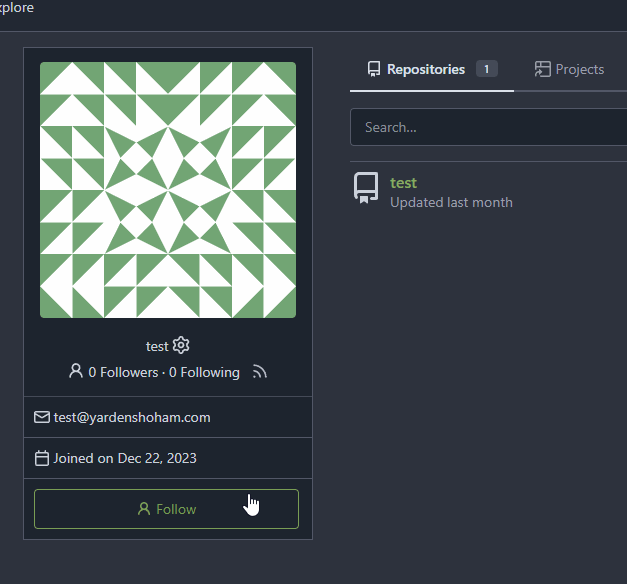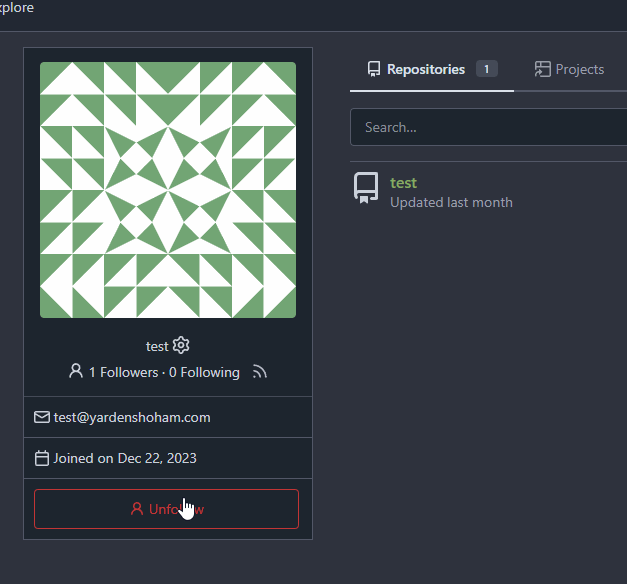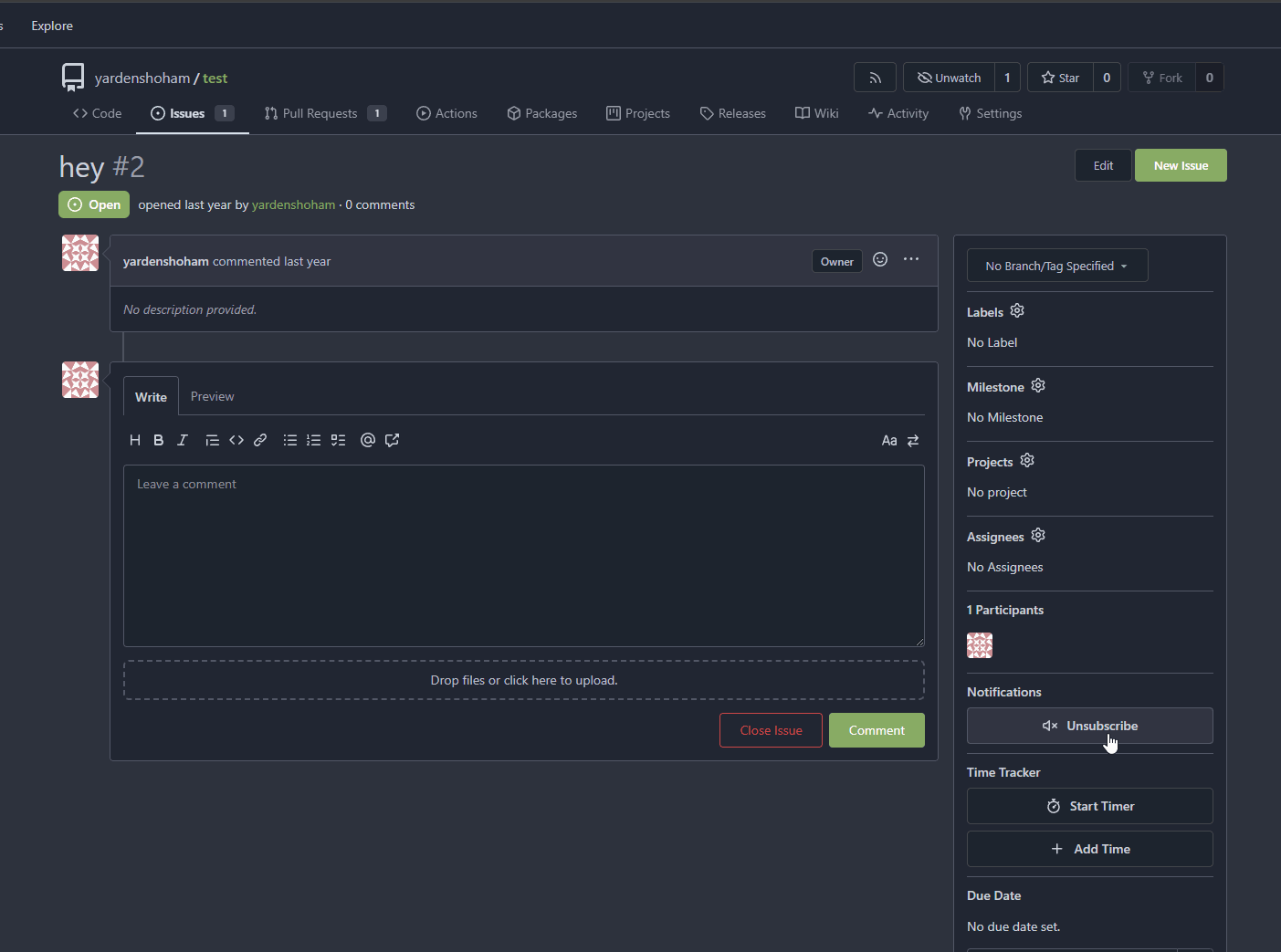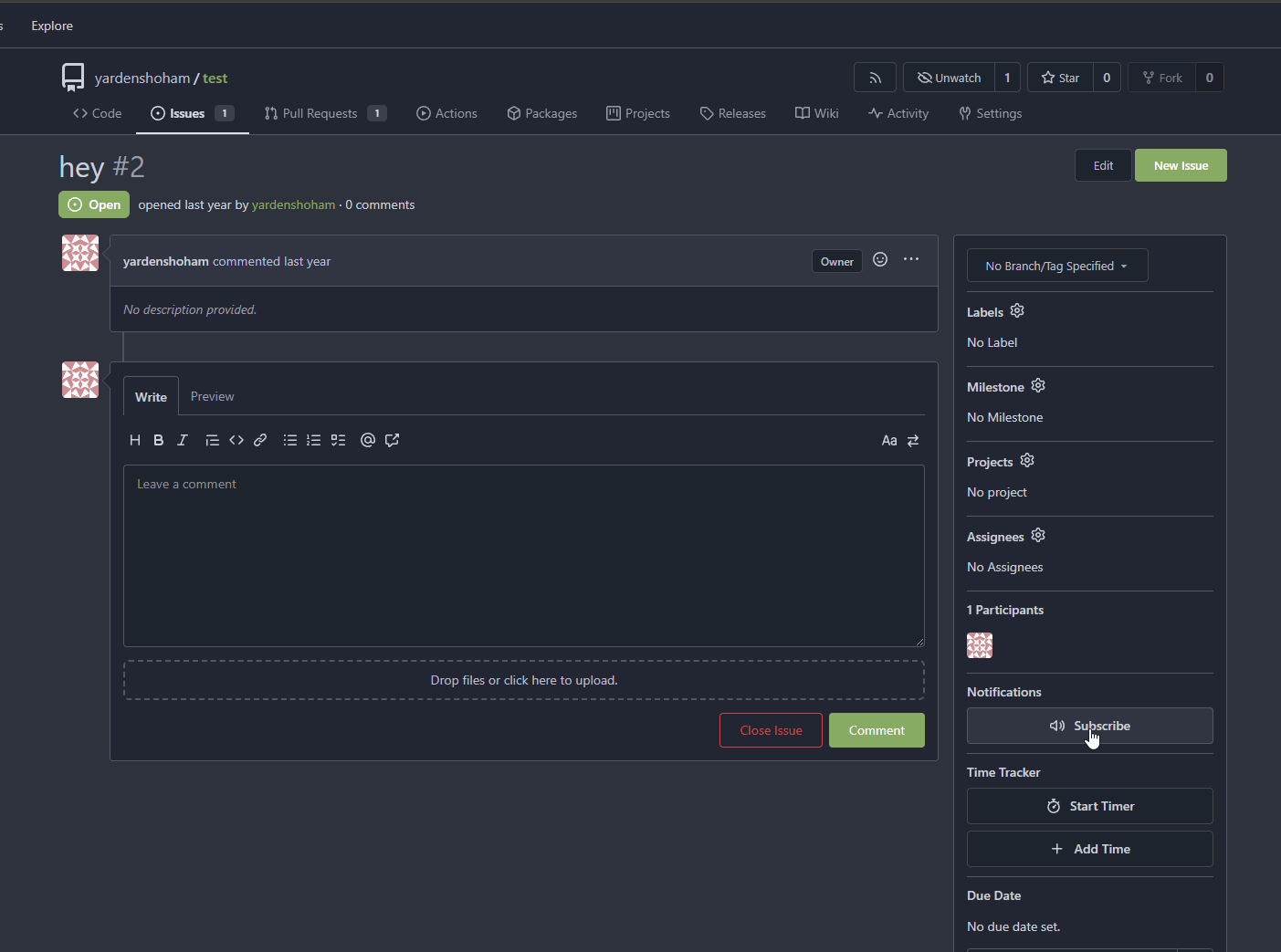Gitea treat JS errors seriously, so sometimes the JS errors caused by
3rdparty code (eg: browser extensions) would also be reported on Gitea
UI: TypeError: WeakMap key undefined (caused by extension DarkReader's
bug) #28861
To avoid fill the user's screen with a lot of error messages, this PR
merges the same error messages into one, like this:
```js
<div class="page-content">
<div class="... js-global-error" data-global-error-msg-compact="testmsg1" data-global-error-msg-count="2">test msg 1 (2)</div>
<div class="... js-global-error" data-global-error-msg-compact="testmsg2" data-global-error-msg-count="1">test msg 2</div>
</div>
```
- Use htmx to perform the button request
- `hx-headers='{"x-csrf-token": "{{.CsrfToken}}"}'` to authenticate (we
should probably learn to reuse this)
- `hx-post="{{.ContextUser.HomeLink}}?action=follow"` to send a POST
request to follow the user
- `hx-target="#profile-avatar-card"` to target the card div for
replacement
- `hx-swap="outerHTML"` to replace the card (as opposed to its inner
content) with the new card that shows the new follower count and button
color
- Change the backend response to return a `<div>` tag (the card) instead
of a redirect to the user page
# Before

# After

Signed-off-by: Yarden Shoham <git@yardenshoham.com>
- Refactor the form around the subscribe button into its own template
- Use htmx to perform the form submission
- `hx-boost="true"` to prevent the default form submission behavior of a
full page load
- `hx-sync="this:replace"` to replace the current request (in case the
button is clicked again before the response is returned)
- `hx-target="this"` to replace the form tag with the new form tag
- `hx-push-url="false"` to disable a change to the URL
- `hx-swap="show:no-scroll"` to preserve the scroll position
- Change the backend response to return a `<form>` tag instead of a
redirect to the issue page
- Include `htmx.org` in javascript imports
This change introduces htmx with the hope we could use it to make Gitea
more reactive while keeping our "HTML rendered on the server" approach.
# Before

# After

---------
Signed-off-by: Yarden Shoham <git@yardenshoham.com>
The previous variables are used by the compiler and aren't too useful
for non-developers. The newly listed variables are more likely to be of
interest.
Apologies for this drive-by PR, I probably missed instructions from the
contributors guide. The patch can be regarded as a simple way to explain
the problem and solution. Feel free to close and possibly create a new
PR that does adhere to the contributors guide.
Git 2.43.0 will not detect a git repository as valid without refs/
subdirectory present. `git gc` cleans this up and puts it in
packed-refs. We must keep refs/ non-empty.
When LFS hooks are present in gitea-repositories, operations like git
push for creating a pull request fail. These repositories are not meant
to include LFS files or git push them, that is handled separately. And
so they should not have LFS hooks.
Installing git-lfs on some systems (like Debian Linux) will
automatically set up /etc/gitconfig to create LFS hooks in repositories.
For most git commands in Gitea this is not a problem, either because
they run on a temporary clone or the git command does not create LFS
hooks.
But one case where this happens is git archive for creating repository
archives. To fix that, add a GIT_CONFIG_NOSYSTEM=1 to disable using the
system configuration for that command.
According to a comment, GIT_CONFIG_NOSYSTEM is not used for all git
commands because the system configuration can be intentionally set up
for Gitea to use.
Resolves#19810, #21148
Fix `Uploaded artifacts should be overwritten`
https://github.com/go-gitea/gitea/issues/28549
When upload different content to uploaded artifact, it checks that
content size is not match in db record with previous artifact size, then
the new artifact is refused.
Now if it finds uploading content size is not matching db record when
receiving chunks, it updates db records to follow the latest size value.
Sometimes you need to work on a feature which depends on another (unmerged) feature.
In this case, you may create a PR based on that feature instead of the main branch.
Currently, such PRs will be closed without the possibility to reopen in case the parent feature is merged and its branch is deleted.
Automatic target branch change make life a lot easier in such cases.
Github and Bitbucket behave in such way.
Example:
$PR_1$: main <- feature1
$PR_2$: feature1 <- feature2
Currently, merging $PR_1$ and deleting its branch leads to $PR_2$ being closed without the possibility to reopen.
This is both annoying and loses the review history when you open a new PR.
With this change, $PR_2$ will change its target branch to main ($PR_2$: main <- feature2) after $PR_1$ has been merged and its branch has been deleted.
This behavior is enabled by default but can be disabled.
For security reasons, this target branch change will not be executed when merging PRs targeting another repo.
Fixes#27062Fixes#18408
---------
Co-authored-by: Denys Konovalov <kontakt@denyskon.de>
Co-authored-by: delvh <dev.lh@web.de>